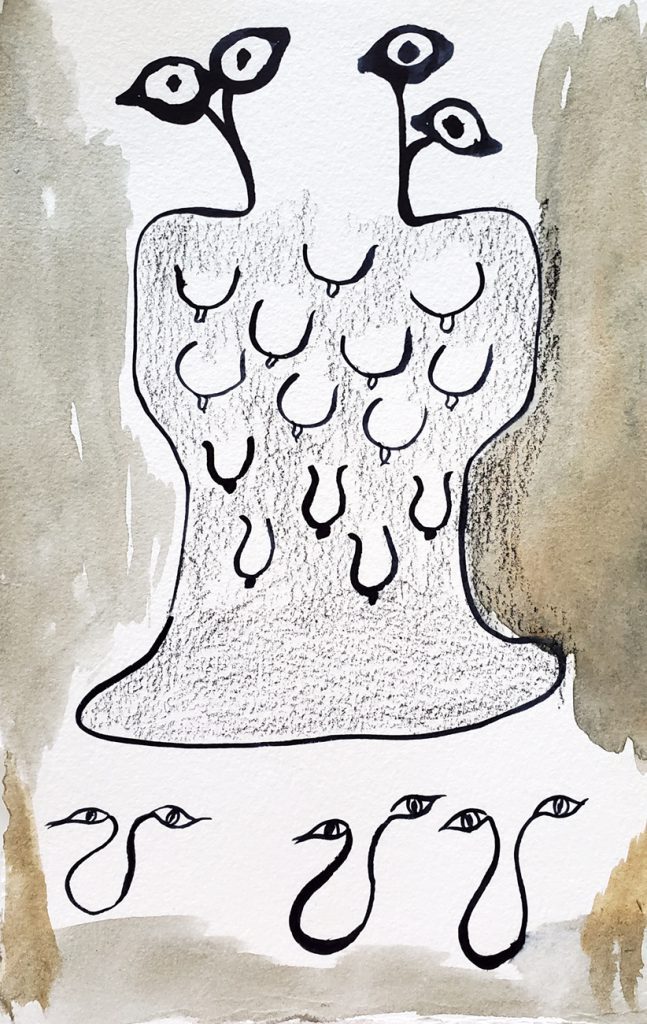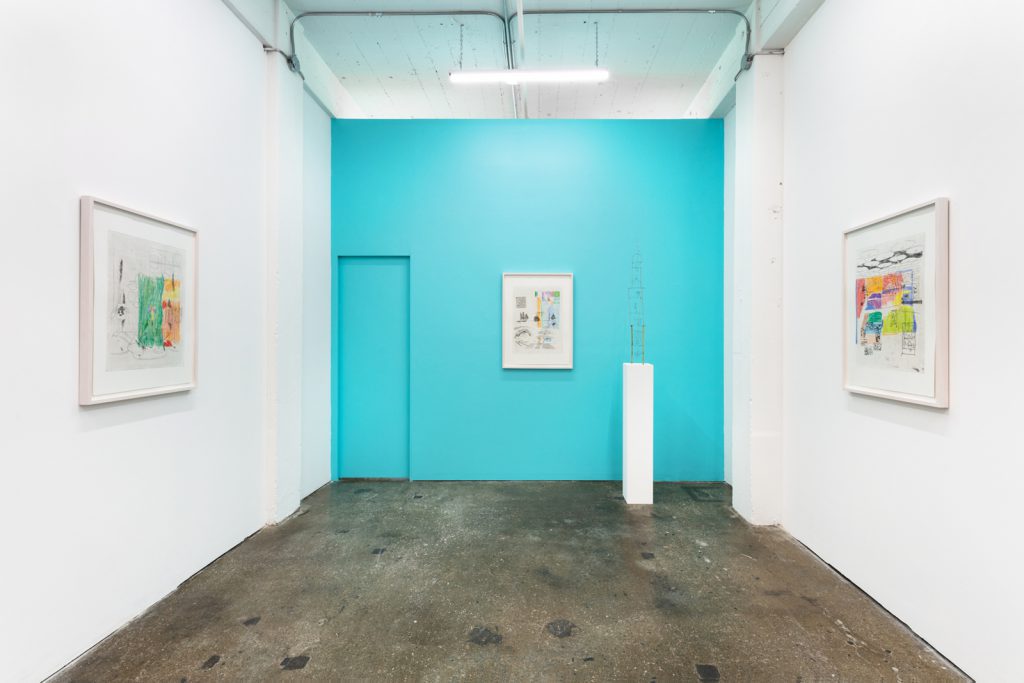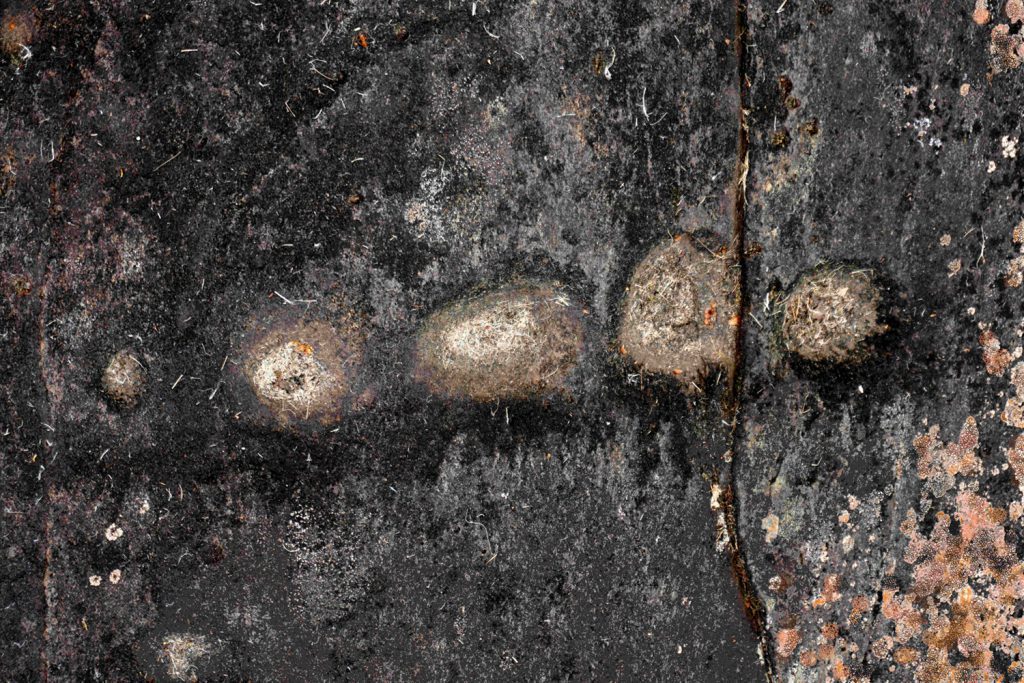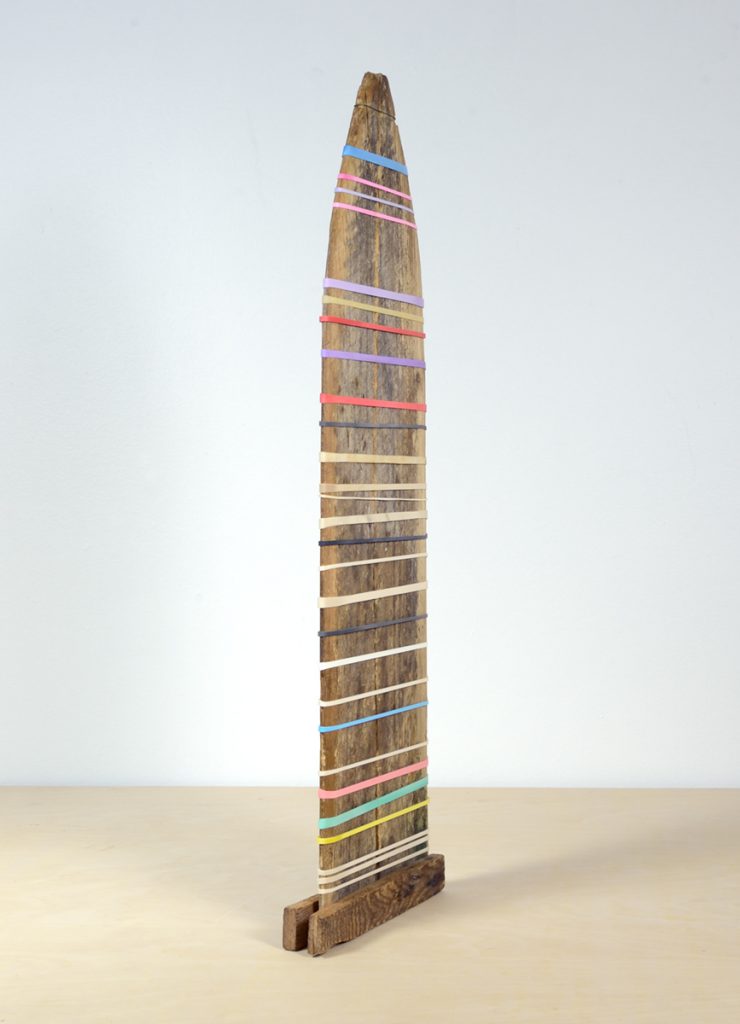
Images of Mothers with Breasts: A Conversation between Amanda Boulos and Jasmine Reimer
13 March 2022In She Can Cook a Potato in Her Hand and Make it Taste Like Chocolate, an artistic research and exhibition project led by Jasmine Reimer, she investigates Neolithic goddess mythology and symbols with twelve artists, researchers and academics, including Toronto-based artist Amanda Boulos. Interviews related to the project took place over Zoom and subsequent email correspondence due to strict COVID-19 lockdowns, when stories were told only through screens. In this conversation, Boulos and Reimer speak about their practices in relation to the visual language and body of “the Goddess.”
Boulos discusses her latest series, Mother’s Storage (2020), dedicated to her Mother as the storyteller of the family and to the nurturing nature of their relationship. She tells us how the abstract imagery emerges from familial narratives, body language and excessive smothering. She deeply admires and relates to Reimer’s goddess drawings from the recent series, The Great Round (2020-2021), asking about her inspirations for the towering charcoal works. Reimer’s The Great Round explores how “the Goddess” and her various manifestations as rocks, bodies of water, trees and plants helped Neolithic communities connect to non-anthropocentric lifecycles. In her drawings, Reimer adds to the mythology via gender-fluid hybrid forms.
Continue Reading


